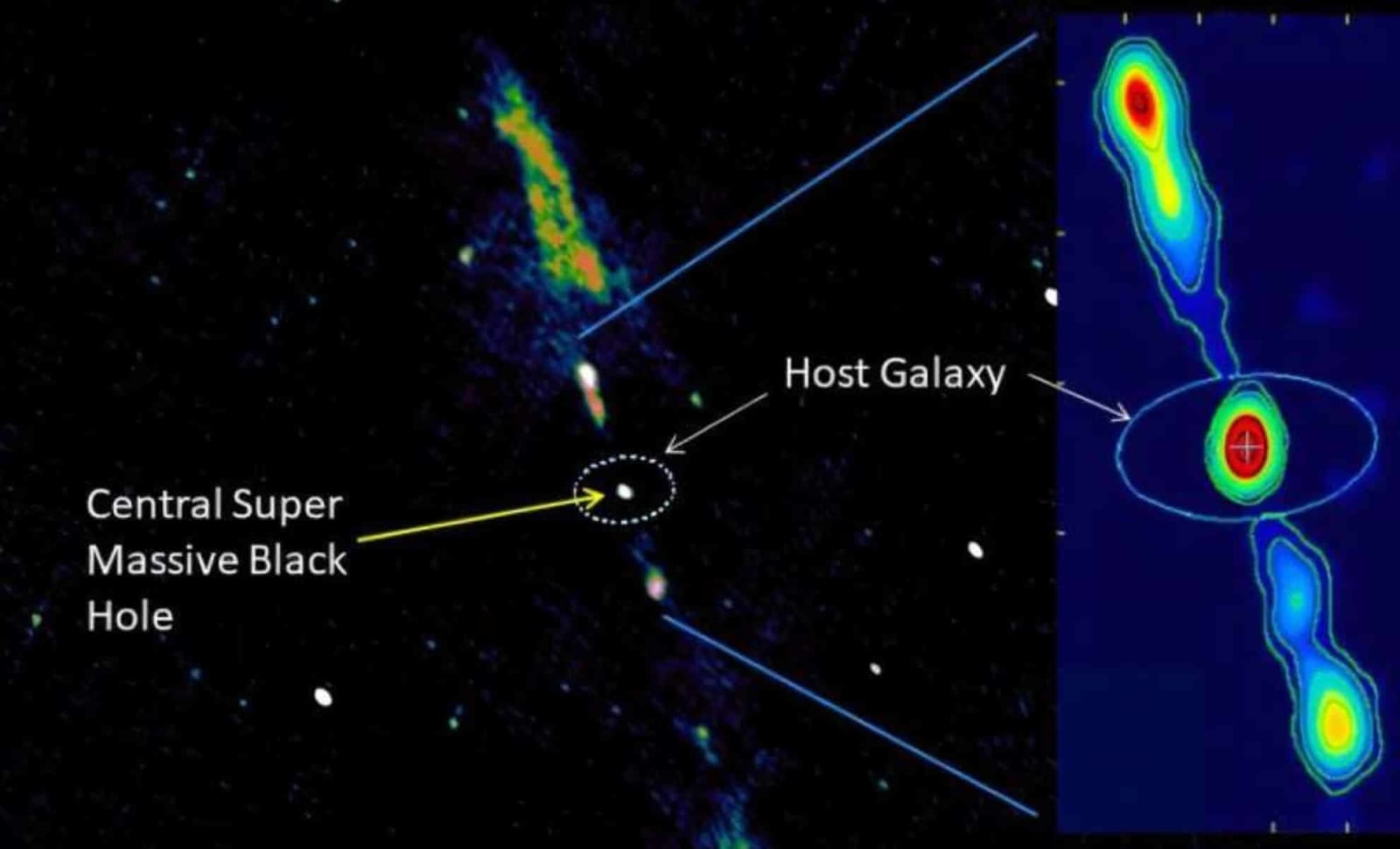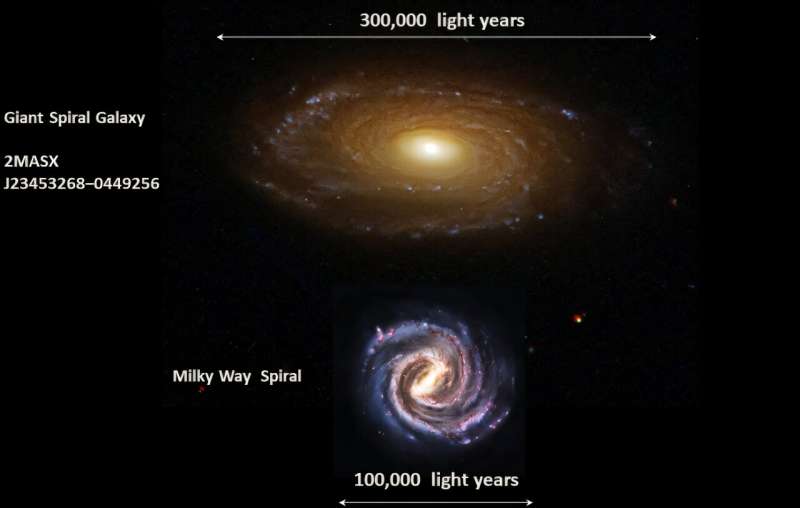
Astronomers have discovered an intense cosmic anomaly that could provide insights into the future of our own Milky Way Galaxy. Located at the center of a large spiral galaxy almost a billion light-years away , researchers have identified one of the strongest instances of black hole activity Have you ever witnessed such phenomena in a galaxy like this one? It challenges what we've known for decades regarding how galaxies expand, develop, and endure.
Published in the Monthly Notices from the Royal Astronomical Society , the findings suggest that spiral galaxies like our own are not as immune to high-energy disruption as once believed—and that the Milky Way’s quiet center could one day erupt with consequences for life on Earth.
A Supermassive Engine Inside a Spiral Giant
The galaxy in question, 2MASX J23453268−0449256 , is roughly three times the size of the Milky Way and hosts a supermassive black hole billions of times the mass of the Sun. What shocked scientists was the discovery of radio jets stretching 6 million light-years —among the largest ever observed in any galaxy, let alone a spiral.
“This discovery is more than just an oddity—it forces us to rethink how galaxies evolve, and how supermassive black holes grow in them and shape their environments,” said lead author Professor Joydeep Bagchi of CHRIST University in Bangalore.
Traditionally, such energetic jets were thought to tear apart the delicate disk structures of spiral galaxies. But this one appears to be thriving—its arms intact, its stellar ring undisturbed, and its nucleus glowing with activity.

The Milky Way’s Dormant Threat
At the center of our galaxy sits Sagittarius A (Sgr A*), a black hole with a mass of about 4 million suns . For now, it remains largely inactive. But scientists warn that a future event—such as the capture of a rogue star or gas cloud—could trigger tidal disruption events capable of awakening it.
“Could our galaxy one day experience similar high-energy phenomena that will have serious consequences for the survival of precious life in it?” Bagchi asked.
If Sgr A* unleashed jets like those seen in J23453268−0449256, their direction and strength would determine their impact. Radiation from such a jet could strip atmospheres , mutate DNA, and degrade Earth’s ozone layer . Even without direct exposure, the interstellar environment around us could be dramatically altered.
A Galaxy that Shouldn’t Exist
Despite its violent core, J23453268−0449256 retains the classic beauty of a spiral galaxy—an arrangement long believed incompatible with colossal jet activity . It features well-defined spiral arms , a bright central bar, and no signs of being torn apart by its central black hole.
Adding to its uniqueness is a vast halo of X-ray-emitting gas . While this gas would typically cool and give birth to stars, the galaxy’s jets act like a cosmic furnace , heating the halo and suppressing new star formation .
This creates a paradox: a galaxy that seems both extremely active and yet surprisingly stable .
Dark Matter and Hidden Forces
The study also revealed that J23453268−0449256 contains around ten times more dark matter than the Milky Way. This extra mass may be the key to its survival, allowing it to withstand the internal chaos without structural collapse.
“Understanding these rare galaxies could provide vital clues about the unseen forces governing the universe—including the nature of dark matter, the long-term fate of galaxies, and the origin of life,” said Shankar Ray , co-author and Ph.D. student at CHRIST University.
By uncovering a stable relationship between dark matter , galactic architecture , and black hole feedback , the discovery opens up new frontiers in astrophysics and cosmology .
Looking Ahead at Our Own Galaxy
The idea that spiral galaxies are passive and orderly no longer holds up. The case of J23453268−0449256 suggests they can harbor extreme energy outputs without losing their structure—and that similar events may lie in the Milky Way’s future .
“Ultimately, this study brings us one step closer to unraveling the mysteries of the cosmos, reminding us that the universe still holds surprises beyond our imagination,” Ray said.
The silent heart of our galaxy may not stay quiet forever. When it wakes, the impact could ripple far beyond the stars—right down to our own world.
Enjoyed this article? Subscribe to our free newsletter for engaging stories, exclusive content, and the latest news.
For more news like this, visit .